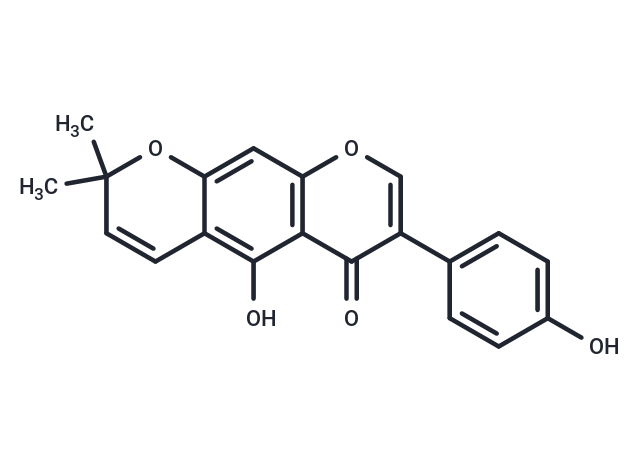Shopping Cart
- Remove All
 Your shopping cart is currently empty
Your shopping cart is currently empty

Alpinumisoflavone has atheroprotective effects, may result from their ability to upregulate mechanisms promoting HDL-cholesterol and bile acid formation, it is endowed with estrogenic properties accounting, at least in part, for E. lysistemon effects. Alpinumisoflavone induces cell death, may be via repressing both the ERK/MAPK and NF-κB pathways. Alpinumisoflavone is active against both Gram-negative and Gram-positive bacteria, the minimum inhibitory concentration values obtained (MIC) ranged from 3.9 ug/mL to 125 ug/mL.


| Description | Alpinumisoflavone has atheroprotective effects, may result from their ability to upregulate mechanisms promoting HDL-cholesterol and bile acid formation, it is endowed with estrogenic properties accounting, at least in part, for E. lysistemon effects. Alp |
| Molecular Weight | 336.34 |
| Formula | C20H16O5 |
| Cas No. | 34086-50-5 |
| Relative Density. | 1.368g/cm3 |
| Storage | Powder: -20°C for 3 years | In solvent: -80°C for 1 year | Shipping with blue ice. |

Copyright © 2015-2025 TargetMol Chemicals Inc. All Rights Reserved.